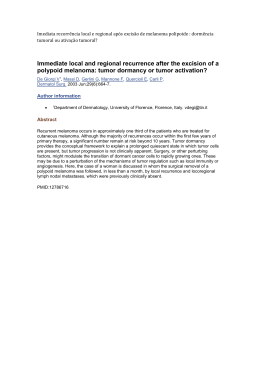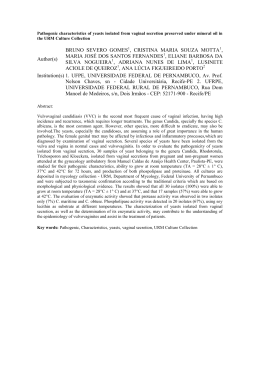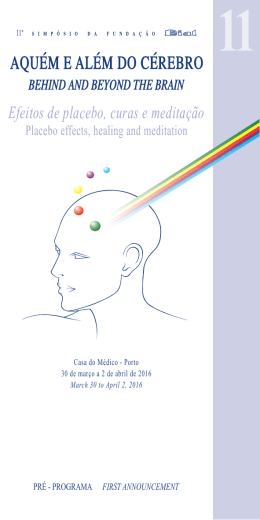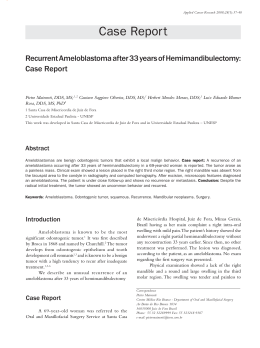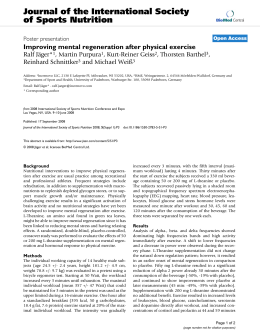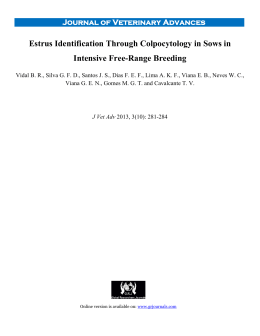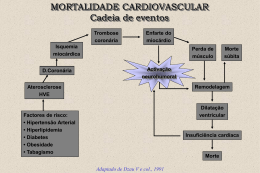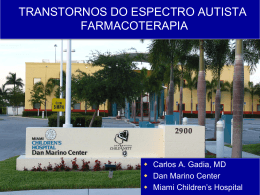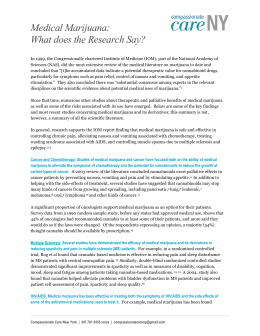SISTEMATIC REVIEW Vulvovaginitis and the Treatment of Asymptomatic Partners: A Systematic Review and Metanalisis Paulo César Giraldo1, Hugo Marcus Rodrigues2, Amanda G Melo2, Rose Luce do Amaral3, Mauro Romero L Passos4, José Eleutério Junior5, Ana Katherine Gonçalves6 ABSTRACT Introduction: treating sexual partners of women with vaginal candidiasis and bacterial vaginosis is an issue in debate. Despite the present recommendations of the international guidelines to not to treat the asymptomatic sexual partners, this is a frequent practice between gynecologists. Objective: evaluate the influence of treating asymptomatic sexual partner of women with recurrent vulvovaginitis. Methods: databases searched: PubMed, Embase, Scielo and CINAHAL. Selection criteria: randomized clinical trials published from 1982 to 2012 were included. Studies involving pregnant women were excluded. Methodological quality was assessed using the Jadad scale. Data collection and analysis: Review Manager 5.1 was used for statistical analysis. Results: eight randomized clinical trials were included based on the chosen criteria: 1,088 women were enrolled. For bacterial vaginosis, the RR for cure was 1.00 (95%CI: 0.95–1.05) (p = 0.13), and for recurrence 0.84 (95%CI: 0.62–1.14) (p = 0.34). Vaginal candidiasis had a RR of 1.03 (95%CI: 0.94–1.14) (p = 0.48) for cure, and 1.02 (95%CI: 0.77–1.33 p = 0.91) for recurrence. Conclusion: treatment of asymptomatic sexual partners of women with vaginal candidiasis or bacterial vaginosis does not affect the cure or recurrence rates and may increase the risk of side effects and unnecessary financial costs. Keywords: vulvovaginitis, bacterial vaginosis, candidiasis, partner, treatment INTRODUCTION Vulvovaginitis (VV) is a common complaint and one of the most frequent reasons patients seek gynecologists(1). Annually, approximately 10 million consultations are attributed to symptoms and signs of vaginal discharge(2). Despite VV being a very relevant condition to women due to the high personal and financial costs ensued, it is often minimized by women and the medical community. This repeatedly results in incorrect diagnosis and treatment by both women and doctors(1), resulting in exaggerated use of antibiotics and antifungals. The main causes of VV are well established: bacterial vaginosis (BV), vaginal candidiasis (VVC) and trichomoniasis (VT). However several questions are debatable, such as best drug to be used, treatment regiment and most appropriate route of administration. Since VT has been confirmed as a sexually transmitted disease (STD), the treatment of an asymptomatic partner is uncontested(3-5). Some studies suggest that treatment of sexual partners of women with BV could reduce recurrence rates from 5% to 20%. However, data evaluating the efficacy of this practice is controversial(6-8). In a well-designed clinical trial, Mengel et al. (1989) found a reduction in recurrence rates in patients with BV whose partners were simultaneously treated(9). Nontheless, three other studies found no relationship between oral therapy of the partner and the recurrence rates of women(10-12). VVC cannot be established as a STD since the transmission of the agent does not necessarily cause VV. It is known that the inci1 Titled Professor of Gynecology and Obstetrics Department of Campinas State University (UNICAMP). 2 Graduate Medicine student of Rio Grande do Norte Federal University. 3 Gynecologist doctor, Gynecology and Obstetrics Department, Campinas State University (UNICAMP). 4 associate Professor and Chief of the Division of Sexually Transmitted Diseases of Fluminense Federal University. 5 Assistant Professor, Maternal and Child Health Department of Ceará Federal University (UFC). 6 Associate Professor, Gynecology and Obstetrics Department of Rio Grande do Norte Federal University (UFRN). dence of VVC increases dramatically in the second decade of life, corresponding to the onset of sexual activity, when several factors (tissue trauma, deposition of semen in the vaginal cavity, exaggerated use of soaps and chemicals, hormonal changes) influence the vulvovaginal ecosystem(13). The sexual transmission of Candida can occur during intercourse, but the frequency and timing of intercourse could influence the development of an acute crisis(14). The practice of oral sex has also emerged as one of the risk factors(15). Current studies have associated homosexual practices with an increase in the prevalence of Candida in the female genitals(16). On the other hand, some studies suggest that the role of sexual practice in the establishment of VVC has been amplified(17,18). A recent study which proposed to evaluate the transmission of genital candidiasis among heterosexual couples could not prove sexual acquisition(19). This study evaluated the Candida species found in couples and found that only 25% of men and women had the same species of Candida, contradicting previous studies(15). In other studies which have treated sexual partners of women with VVC, no increase in cure rates, decline or recurrence was observed(17). Currently, despite the existing technology for diagnosis and treatment of VV, the role of sexual transmission has yet to be defined. The clarification of this controversy could avoid unnecessary treatment of sexual partners, thus reducing costs, side effects and conflict within the couple. OBJECTIVE This study proposes to systematically evaluate the influence of asymptomatic partner treatment in the cure and recurrence of VV. METHODS This study adhered to PRISMA guidelines(20). Inclusion criteria Randomized controlled trials published in the last 30 years to assess the effectiveness of partner treatment in the cure and recurrence of VV. DST - J bras Doenças Sex Transm 2013;25(1):36-40 - ISSN: 0103-4065 - ISSN on-line: 2177-8264 DOI: 10.5533/DST-2177-8264-201325108 Vulvovaginitis and the Treatment of Asymptomatic Partners: A Systematic Review and Metanalisis Exclusion criteria Women under 16 years of age, HIV+, pregnant, asymptomatic, and sex workers were excluded. These groups represent populations at increased or decreased risk for STDs, wherein the prevalence of disease differs from the general population. This could interfere with the sensitivity and/or specificity of the analysis in this review. Search and selection of literature Eligible studies were identified by searching the following databases: PubMed, Embase, Scielo, CINAHAL, and Google scholar. The studies were identified by a literature search of databases following medical subject heading terms and/or text words (Mesh Terms): (Treatment) AND (Vulvovaginitis) OR (Candidiasis) OR (Moniliasis) OR (Vaginitis, Monilia) OR (Vaginosis) OR (Vaginitis) OR (Trichomonas) AND (Partners) AND (randomized controlled trial) OR (clinical trial) OR (follow-up) OR (prospective) NOT (Pregnant Woman). The bibliographies of the identified publications were reviewed for additional pertinent studies. No language restrictions were applied. Two researchers (AKG and HMR) searched for articles published up to May 2012. After searching the databases, 513 potentially relevant papers were identified, 102 of which were excluded after review of titles. Next the abstracts of the 411 remaining titles were read, removing a further 313 titles. Of the 98 remaining articles, 8 were duplicated among the databases, which left 90 articles for final reading and qualitative assessment by the Jadad scale(21). The Jadad scale considered studies to be methodologically adequate when they obtained a score of 3 or more(21). Thus, studies obtaining 3 or more points (8 studies) were classified as high methodological quality and remained in the systematic review (Figure 1). Data extraction Several characteristics of the original articles were extracted and included in the systematic review. The data included the last name of the first author, the year of publication, country, number of subjects, type of VV studied as well as type of intervention and results. Analysis Statistical analysis was done using Review Manager (RevMan) 5.1 to provide a group analysis of the results of the selected clinical trials. The pooled analysis was obtained by analyzing the combined results of the chosen studies using the random effect model, and then testing for heterogeneity using the Chi-square test. The homogeneity of the selected studies was realized. 37 RESULTS Bacterial vaginosis Four randomized controlled trials were selected: Verjtorp et al. (1988)(10) conducted a major randomized double blind clinical trial with 117 women using 500 mg of metronidazole 2 x day for 7 days. Half of the partners were randomly treated with the same treatment regimen or a placebo. Cure and recurrence rates were similar among women with treated partners (cure: 51/54 and recurrence: 13/54) or placebo partners (cure: 44/53 and recurrence: 14/53) (Table 1). Moi et al. (1989)(4) in another double-blind randomized controlled trial with 241 women who were treated with 2 g of metronidazole, and repeated 2 days later. The partners were randomly treated with the same dose of metronidazole. Cure and recurrence rates were similar among women with treated partners (cure: 115/119 and recurrence: 19/112) or placebo partners (cure: 111/113 and recurrence: 14/106) (Table 1). Vutyavanich et al. (1993)(11) conducted a randomized clinical trial of 250 Thai women treated with 2 g of tinidazole and a partner randomly treated to placebo or tinidazole. Cure and recurrence rates were similar among women with treated partners (cure: 111/122 and recurrence: 43/117) or placebo partners (cure: 113/119 and recurrence: 33/126) (Table 1). Colli et al. (1997)(5) carried out a randomized double-blind study with 131 Italian women who were treated with 2% clindamycin in the form of vaginal cream for 7 days. The partners were randomly treated with oral clindamycin or a placebo. Cure and recurrence rates were similar among women with treated partners (cure: 66/69 and recurrence: 5/38) or placebo partners (cure: 65/69 and recurrence: 9/32) (Table 1). The total RR for cure and recurrence were similar among women whose partners were treated or not for BV: cure RR 1.00 (95% CI: 0.95-1.05) (p = 0.13) Recurrence RR 0.84 (95% CI: 0.62-1.14) (p = 0.34) (Figure 2). Vaginal candidiasis Bishop et al. (1986)(22) conducted a double blind randomized clinical trial in Belgium with 117 women treated with 200 mg of ketoconazole 2 x daily for 3 days whose partners were randomly treated with ketoconazole or placebo. Cure and recurrence rates were similar among women with treated partners (cure: 48/57 and recurrence: 13/48) or placebo partners (cure: 53/60 and recurrence: 19/53) (Table 1). Cure Figure 1 – Study selection cure. DST - J bras Doenças Sex Transm 2013;25(1):36-40 38 giraldo et al. Table 1 – Characteristics of selected randomized clinical trials for BV and VVC Study Country Subjects Randomized Intervention Results Denmark 107 non-pregnant women with BV Women: 500 mg of metronidazol 2 x day/7days Partners: 50% = same treatment, 50% = placebo Treated cure: 51/54 Recurrence: 13/54Placebo cure: 44/53 Recurrence: 14/53 Moi (1989) Denmark 241 non-pregnant women with BV Vutyavanich (1993) Thailand 250 non-pregnant women with BV Verjtorp (1988) Colli (1997) Bishop (1986) Calderon-Marquez (1987) Fong (1992) Shihadeh (2000) Women: 2 g of metronidazol 2 x day Partners: same treatment randomized Women: 2 g of tinidazol Partners: randomized tinidazol or placebo Treated cure: 115/119 Recurrence: 19/112 Placebo cure: 111/113 Recurrence: 14/106 Treated cure: 111/122 Recurrence: 43/117 Placebo cure: 113/119 Recurrence: 33/126 131 non-pregnant women with BV Women: clindamycin 2% vaginal cream/ 7 days Partners: randomized oral clindamycin or placebo Treated cure: 66/69 Recurrence: 5/38 Placebo: cure: 65/69 Recurrence: 9/32 Belgium 117 non-pregnant women with VVC Women: 200 mg 2 x day ketoconazole for 3 days Partners: randomized ketoconazole or placebo Treated cure: 48/57 Recurrence: 13/48 Placebo cure: 53/60 Recurrence: 19/53 Mexico 44 non-pregnant women with VVC Women: 200 mg 2 x day ketoconazole for 3 days Partners: randomized ketoconazole or placebo Treated cure: 17/20 Recurrence: 0/16 Placebo cure: 15/19: Recurrence: 2/15 Canada 54 non-pregnant women with VVC Women: 400 mg 2 x day ketoconazole for 7 days Partners: randomized 200 mg ketoconazole for 5 days Treated cure: 26/28 Recurrence: 8/26 Placebo cure: 15/19 Recurrence: 9/28 Women: 400 mg 2 x day ketoconazole for 7 days Partners: half received randomized ketoconazole Treated cure: 26/28 Recurrence: 8/26 Placebo cure: 15/19 Recurrence: 9/28 Italy Jordan 144 non-pregnant women with VVC Calderon-Marquez (1987)(23) carried out a randomized double-blind study which included 44 women who used 50 mg itraconazole 2 x day for 5 days and their randomly treated partners. Cure and recurrence rates were similar among women with treated partners (cure: 17/20 and recurrence: 0/16) or placebo partners (cure: 15/19 and recurrence: 2/15) (Table 1). Fong et al. (1992)(24) conducted a randomized clinical trial with 54 Canadian women who received 400 mg of ketoconazole for 7 days. The partner received 200 mg of ketoconazole for 5 days, or a placebo. Cure rates and recurrence were similar among women with treated partners (cure: 26/28 and recurrence: 8/26) or placebo partners (cure: 15/19 and recurrence: 9/28) (Table 1). Shihadeh et al. (2000)(25) carried on a randomized clinical trial in Jordan with 144 women who received 400 mg of ketoconazole for 7 days. Half the partners received 400 mg ketoconazole for 7 days. Cure and recurrence rates were similar among women with treated partners (cure: 57/72 and recurrence: 35/57) or placebo partners (cure: 53/72 and recurrence: 28/53) (Table 1). The total RR for cure and recurrence was similar among women whose partners were treated or not for VVC: cure RR 1.03 (95% DST - J bras Doenças Sex Transm 2013;25(1):36-40 CI: 0.94-1.14) (p = 0.48), recurrence RR 1.02 (95% CI: 0.77-1.33) (Figure 3). Vaginal trichomoniasis Interestingly, in the last 30 years no trials have been performed evaluating the indication of treatment of partners of women with VT. The only randomized clinical trial was conducted over 30 years ago; it was not possible to include it in this study. In 1981 Lyng & Christensen(26) conducted a randomized clinical trial with 118 women, which found that the persistence of the infection was significantly higher in the group which had no partner treatment (14/59) compared to the group which did (3/59) (RR: 0.21, 95% CI: 0.06-0.71). This difference persisted in the subgroup who resumed sex with untreated partners. More recently, in a study testing the efficacy of intravaginal nonoxynol 9 for VT, Antonelli et al. (2000)(27). observed that women whose partners were treated with metronidazole showed better cure rates compared those whose partners went untreated. This study cannot be considered for this meta-analysis since the randomization, tracking was not described. Vulvovaginitis and the Treatment of Asymptomatic Partners: A Systematic Review and Metanalisis 39 Recurrence Figure 2 – Pooled analysis of selected BV studies. Cure Recurrence Figure 3 – Pooled analysis of selected VVC studies. DISCUSSION The medical literature and most researchers suggest that sexual partners of women with VV should not be treated(27). However, some national health programs, including Brazilian health services, treat VV erroneously as a STD and leave treatment to the discretion of gynecologists. Unfortunately this results in over treatment which increases costs and causes unnecessary physical side effects. There are also serious social and emotional implications which cause conflict within the couple due to having transmitted a STD. Very few studies consider the latter or more importantly, the microbial resistance resulting from this practice. Proponents of partner treatment argue that this practice could reduce recurrences in women as well as new transmissions. However our findings do not confirm these VT assertions. VT seems to be the only infectious VV wherein treating the partner increases the chances of cure and reduces recurrence. This being said, the only study that confirms this hypothesis, by Lyng & Christensen(26), was conducted in 1981. Besides this, it is accepted that VT is a protozoan and cannot be found in the vaginal cavity under normal conditions and is not part of the vaginal flora. It follows that VT must be treated in both parties. We believe that the ban on placebo use in clinical trials in recent years has impeded randomized trials(28). Since VT is considered a STD the consequence of prescribing a placebo instead of the treatment is not ethically accepted. In vivo studies in animal models are a solution, even though they are difficult to perform. Even so, it is fundamental to encourage both studies in vitro and in animal models, which are already well known for VVC, but not yet established for BV. Contrary to VT, BV and VVC are caused by microorganisms part of the normal microflora composition which sometimes assume the role of pathogens. The pooled analysis suggested a slightly lowered risk of recurrence was from the group of women with partners treated for BV-RR 0.84 (95% CI: 0.62-1.14), however no statistically significant values were found for cure rates. There was no difference between the group of men who received a placebo and those who were treated-RR: 1.00 (95% CI: 0.95–1.05). The pooled analysis of studies on VVC suggests that the evidence pointing to asymptomatic partner treatment is much weaker than for VB. The total RR for cure was 1.03 (95% CI: 0.94-1.14), and for recurrence 1.02 (95% CI: 0.77-1.33). DST - J bras Doenças Sex Transm 2013;25(1):36-40 40 giraldo et al. Therefore, it is evident from these results that partner treatment does not significantly influence the outcome of cure and/or recurrence rates of BV and VVC. This evidence can help the General Practitioner to treat patients and their partners more adequately, thus avoiding the side effects of overtreatment. Conflict of interest No conflict of interest to declare. REFERENCES 1. 2. 3. 4. 5. 6. 7. 8. 9. 10. 11. 12. 13. 14. Lipsky MS, Waters T, Sharp LK. Impact of vaginal antifungal products on utilization ofhealth care services: evidence from physician visits. J Am Board Fam Pract. 2000;13(3):178-82. Wilson C. Recurrent vulvovaginitis candidiasis: an overview of traditional and alternative therapies. Adv Nurse Pract. 2005;13(5):24-9. Mashburn J. Etiology, Diagnosis, and Management of Vaginitis. J Midwifery Womens Health. 2006;51(6):423-30. Moi H, Erkkola R, Jerve F, Nelleman G, Bymose B, Alaksen K et al. Should male consorts of women with bacterial vaginosis be treated? Genitourin Med. 1989;65(4):263-8. Colli E, Landoni M, Parazzini F. Treatment of male partners and recurrence of bacterial vaginosis: a randomised trial. Genitourin Med. 1997;73(4):267-70. Lugo-Miro VI, Green M, Mazur L. Comparison of different metronidazole therapeutic regimens for bacterial vaginosis: a meta-analysis. JAMA. 1992;268(1):92-5. Hillier S, Krohn MA, Watts H, Wolner-Hanssen P, Eschenbach D. Microbiologic efficacy of intravaginal clindamycin cream for the treatment of bacterial vaginosis. Obstet Gynecol. 1990;76(3 Pt 1):407-13. Thomason JL, Gelbart SM, Scaglione NJ. Bacterial vaginosis: current review with indications for asymptomatic therapy. Am J Obstet Gynecol. 1991;165(4 Pt 2):1210-7. Mengel MB, Berg AO, Weaver CH, Herman DJ, Herman SJ, Hughes VL et al. The effectiveness of single dose metronidazole therapy for patients and their partners with bacterial vaginosis. J Fam Pract. 1989;28(2):163-71. Vejtorp M, Bollerup AC, Vejtorp L, Favoe E, Nathan E, Reite A et al. Bacterial vaginosis: a double-blind randomized trial of the effect of treatment of the sexual partner. Br J Obstet Gynaecol. 1988;95(9):920-6. Vutyavanich T, Pongsuthirak P, Vannareumol P, Ruangsri R-A, Luangsook P. A randomized double-blind trial of tinidazole treatment of the sexual partners of females with bacterial vaginosis. Obstet Gynecol. 1993;82(4 Pt 1):550-4. Swedberg L, Steiner JF, Deiss F, Steiner S, Driggers DA. Comparison of single dose versus one-week course of metronidazole for symptomatic bacterial vaginosis. JAMA. 1985;254(8):1046-9. Foxman B, Marsh JV, Gillespie B, Sobel JD. Frequency and response to vaginal symptoms among white and African American women: results of a random digit dialing survey. J Womens Health. 1998;7(9):1167-74. Reed BD, Zazove P, Pierson CL, Gorenflo DW, Horrocks J. Candida transmission and sexual behaviors as risks for a repeat episode of Candida vulvovaginitis. J Womens Health (Larchmt). 2003;12(10):979-89. DST - J bras Doenças Sex Transm 2013;25(1):36-40 15. Bradshaw CS, Morton AN, Garland SM, Morris MB, Moss LM, Fairley CK. Higher-risk behavioral practices associated with bacterial vaginosis compared with vaginal candidiasis. Obstet Gynecol. 2005;106(1):105-14. 16. Bailey JV, Benato R, Owen C, Kavanagh J. Vulvovaginal Candidiasis in Vulvovaginal candidiasis in women who have sex with women. Sex Transm Dis. 2008;35(6):533-6. 17. Sobel JD. Vulvovaginal candidosis. Lancet. 2007;369(9577):1961-71. 18. Sobel JD. Genital candidiasis. Medicine 2010;38:386-90. 19. Lisboa C, Costa AR, Ricardo E, Santos A, Azevedo F, Pina-Vaz C et al. Genital candidosis in heterosexual couples. J Eur Acad Dermatol Venereol. 2011;25(2):145-51. 20. Moher D, Liberati A, Tetzlaff J, Altman DG, The PRISMA Group (2009). Preferred Reporting Items for Systematic Reviews and Meta-Analyses: The PRISMA Statement. PLoS Med 6(7):e1000097. 21. Jadad AR, Moore RA, Carroll D, Jenkinson C, Reynolds DJ, Gavaghan DJ et al. Assessing the quality of reports of randomized clinical trials: is blinding necessary? Control Clin Trials. 1996;17(1):1-12. 22. Bishop MPJM, Merkus MWM. Co-treatment of the male partner in vaginal candidosis: a double-blind randomized control study. Br J Obstet Gynaecol. 1986;93(1):79-81. 23. Calderon-Marquez JJ. Itraconazole in the Treatment of Vaginal Candidosis and the Effect of Treatment of the Sexual Partner. Rev Infect Dis. 1987;9(Suppl 1):S143-5. 24. Fong IW. The value of treating the sexual partners of women with recurrent vaginal candidiasis with ketoconazole. Genitourin Med. 1992;68(3):174-6. 25. Shihadeh AS. The value of treating the male partner in vaginal candidiasis. Saudi Medical Journal. 2000;21(11):1065-1067. 26. Lyng J, Christensen J. A double-blind study of the value of treatment with a single dose tinidazole of partners to females with trichomoniasis. Acta Obstet Gynecol Scand. 1981;60(2):199-201. 27. Antonelli ND,. Diehl SJ, Wright, JW. A randomized trial of intravaginal nonoxynol 9 versus oral metronidazole in the treatment of vaginal trichomoniasis. Am J Obstet Gynecol. 200;182(5):1008-10. 28. Watson C, Calabretto H. Comprehensive review of conventional and non-conventional methods of management of recurrent vulvovaginal candidiasis. Aust N Z J Obstet Gynaecol. 2007;47(4):262-72. Address to correspondence: PAULO CÉSAR GIRALDO Department of Gynecology and Obstetrics, University of Campinas, São Paulo, Brazil. Cidade Universitária “Zeferino Vaz” Rua Alexander Fleming, 101, Campinas, São Paulo CEP: 13083-881 Telephone/Fax: +55 (19) 3521-9306 E-mail: [email protected] Received in: 10.05.2013 Approved in: 24.07.2013
Download
